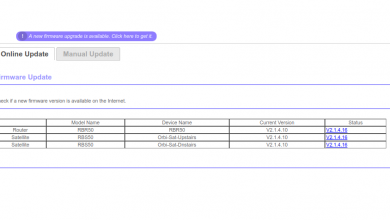How Efficient Communication Boosts Productivity in Remote Teams
Index Of The Blog

Efficient communication brings team members together and allows them to work as a cohesive unit. It’s more important in remote work environments where employees are scattered across different locations. Managers must consider various factors—from living arrangements to time zones—to create communication strategies.
With the best technology for working remotely and suitable communication methods, the workforce can produce positive results. This article sheds light on the importance of effective communication in the virtual workplace. It also covers the Dos and Don’ts of efficient collaboration.
Data Show the Effects of Productive Communication – And the Lack of It
Gatehouse’s 2020 Global State of the Sector survey interviewed 1,000 professional communicators about the importance of internal communication in corporate environments. The report stated that 66% of respondents believe that internal communication is critical to employee experience.
In 2012, McKinsey reported that knowledge workers increase productivity by 20 to 25% when companies use social technologies to foster communication.
Additionally, a Holmes report stated that businesses with productive communication returned 47% more to shareholders over five years.
Conversely, the data looks grim where efficient communication is lacking.
According to the same Holmes voice of the global PR industry report, poor communication cost businesses $37 billion.
A study compiled by SIS International and sponsored by Siemens found that businesses with 100 employees lose an average of $524,569 due to communication latency and barriers.
Things You Should Do to Boost Communication in the Workplace
According to a Gallup post on workplace recognition, telecommuters are likely to feel forgotten and lost even while employed. This is primarily due to inadequate communication strategies.
You can avoid these communication gaps by following the tips below.
Create a Communication Strategy and Make Sure Your Employees Understand It
Your internal communication strategy should be etched into your company’s culture. Compile your communication policy into a document that will serve as a manual for every remote staff.
The document should cover things like:
- Each staff member’s time zone and how they work around it
- Regular working hours
- Overlapping working hours for team members located across different time zones
- How time-sensitive and non-urgent messages will be communicated
- Detailed periods when not to bother specific team members
These pointers should guide you about what to add to the document. You can work with your staff to include other things and improve the blueprint over time.
Leverage the Best Technology for Working Remotely
There’s no shortage of remote work tools to help you communicate and collaborate better. Make sure you do an in-depth analysis to choose solutions that work best with your company.
Carry Out Regular Surveys
Even if you think you’re using best communication practices, you must confirm by asking your employees. Surveys can help you do that. Send out questionnaires to ask your employees how they feel about your company’s communication policies.
It would be a good idea to set a baseline for engagement to track your progress.
Best Buy stated in its 2021 Environmental, Social, and Governance report that surveys lead to an engagement score of 86 out of 100.
Also, ensure the surveys are turned in anonymously to make employees feel comfortable and encourage them to submit honest answers.
Keep Communication Lines Open
Indeed, allowing your team to have a significant amount of decision power is good leadership that reaps benefits for your brand. However, they should also know it’s alright to reach out whenever they have concerns or questions. Your job is to be available to address those issues with them.
An open line of communication builds trust and strengthens the bond between employers and employees. This, in turn, improves employee engagement. And studies have shown that workplaces are safer and more productive with engaged workers.
Encourage One-on-One Communication
Some people are not comfortable speaking in meetings or group chats. This is common with new hires. They can muster the courage to walk up to you in a traditional office environment and speak. They could also wait for close-up encounters like the elevator or break room.
You don’t have those in a virtual environment. Instead, encourage new and old team members to reach out outside the group chat. For example, they could use the DMs in instant messaging applications such as Slack, WhatsApp, and Skype.
Keep Your Employees in the Loop About Important Company Decisions
Letting your employees know about core company decisions can improve morale, increase loyalty, and boost productivity. It gives them a sense of recognition and value, and they’ll genuinely feel like a part of the company.
Additionally, you can get their input on critical board-level decisions that directly affect them. This way, you’re communicating and making important policies employee-friendly.
Things to Avoid
In addition to not doing the opposite of everything outlined above, here are other Don’ts of communication in a virtual workplace:
Don’t Micromanage
Micromanagement can negatively affect your employees’ productivity, reduce trust, and cause high turnover.
In a 2014 Accountemps survey, 55% of respondents said micromanagement decreased their productivity. In addition, 68% reported that it reduced their morale in the workplace.
Low morale and poor employee engagement are sure-fire ingredients for an unproductive work environment. They also discourage creativity and innovation.
Don’t Rely on One Communication Channel
Thankfully, there are now remote working tools designed to foster communication and collaboration. While some might have overlapping features, you don’t have to rely on just one or two communication channels.
Apart from email and video conferencing, you can add other instant messaging platforms like Slack and WhatsApp to the mix.
This way, your employees will have options when they’re not in the mood to go through another lengthy Zoom video conference.
Virtira Consulting carried out a survey and reported its findings in the “The Webcam Survey: Exhausted or Engaged?” paper. It found that more than 49% of workers were extremely fatigued due to daily video calls.
The numbers agree with the Monster poll results, which show that 69% of WFH employees are experiencing burnout.
Apart from burnout, particular messages are best suited to specific channels. For example, a voice or text message is enough to notify a team member to submit a document the next day. There’s no need to start a video chat over that.
Also, you could designate different levels of urgency to different channels. This way, your workers can differentiate between an asynchronous and real-time message. For example, you can notify team members that email messages should be worked on immediately while slack DMs are less urgent.
Don’t Ignore Non-Official Communication Channel
Not having access to your office break room shouldn’t give you cause to terminate non-official communications. Doing that kills productivity to an extent. That’s because employers need socialization to connect on personal levels and even share day-to-day challenges.
Many breakthrough epiphanies and innovative ideas were born beside the water cooler. So, ensure you open and maintain a channel where staff can express themselves freely and have fun. This could be an internal company forum or a separate Slack group chat.
Don’t Overlook Feedback and Employee Complaints
As we mentioned earlier, keeping an open line of communication and conducting surveys boost employee engagement. You have to ensure you take actionable steps with the data you collect.
An Emtrain study found that 41% of respondents are not confident that management will look into complaints. This could kill morale in the workplace, reduce trust in leadership, and drastically affect productivity.
Conclusion
With the right communication strategies, your company is already halfway to achieving its objectives. Don’t forget to continue improving your approach by engaging team members regularly.












